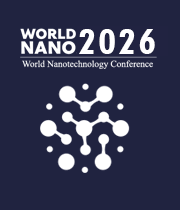Light-Matter Interaction, Optical Manipulation Techniques
Light-matter interaction is a key aspect of nanotechnology, as it allows for precise manipulation of Nanobiotechnology. Through careful control of light, it is possible to manipulate materials at the nanoscale with high precision and accuracy. Optical manipulation techniques such as laser tweezers, optical trapping, and surface plasmon resonance have been developed to achieve this. Laser tweezers use tightly focused beams of light to exert a force on tiny particles or cells and move them in three dimensions, allowing for precise manipulation of the sample. By changing the power or frequency of the laser, researchers can control the force applied to the sample. This technique has been used to manipulate and assemble Nanobiotechnology, such as DNA, proteins, and particles. Optical trapping is another technique used to manipulate Nanobiotechnology. In optical trapping, a laser beam is used to create an optical “cage” around a sample, trapping it within the beam. The sample can then be moved around within the beam, allowing for precise manipulation. This technique has been used to manipulate individual particles, nanotubes, and DNA strands.

Harry Ruda
University of Toronto, Canada
Raman Singh
Monash University, Australia
Paulo Cesar De Morais
Catholic University of Brasilia, Brazil
Xiao Hong Nancy Xu
Old Dominion University, United States
S V A R Sastry
Harcourt Butler Technical University, India
Vinayak Adimule
Angadi Institute of Technology and Management, India



Title : Nanomaterial-based bio-lubricant additives for improved efficiency and environmental sustainability in automotive applications
S V A R Sastry, Harcourt Butler Technical University, India
Title : Harnessing the unique properties of engineered nanostructures for sensing
Harry Ruda, University of Toronto, Canada
Title : Circumventing challenges in developing CVD graphene on steels for extraordinary and durable corrosion resistance
Raman Singh, Monash University, Australia
Title : 40,000 implants in humans and no failure: The impact of nanomedicine
Thomas J Webster, Hebei University of Technology, China
Title : Evaluating cytotoxicity of metal-doped tin oxide nanoparticles
Paulo Cesar De Morais, Catholic University of Brasilia, Brazil
Title : Lipid nanoparticles formulations: From bench scale to industrial scale
Mohammad A Obeid, RAK Medical and Health Sciences University, United Arab Emirates